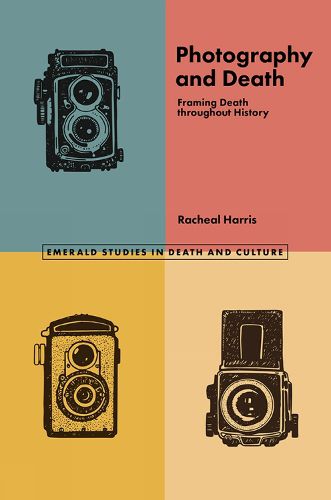Readings Newsletter
Become a Readings Member to make your shopping experience even easier.
Sign in or sign up for free!
You’re not far away from qualifying for FREE standard shipping within Australia
You’ve qualified for FREE standard shipping within Australia
The cart is loading…






Photography represents a medium in which the moment of death can be captured and preserved, the image becoming a mechanism through which audiences are beguiled by the certainty of their own mortality. Examining a spectrum of post-mortem images, Photography and Death considers various ways in which the death image has been framed and what these styles communicate about changing social attitudes related to dying, mourning and the afterlife.
Presenting a fresh perspective on how we might view death photography in the context of our contemporary cultural milieu, this book brings together a range of historical examples to create a richer narrative of how we see, understand and discuss death in both the private and public forum. Building upon existing publications which relate explicitly to the study of death, dying and cultures of mourning, the book discusses topics such as post-mortem portraiture, the Civil War, Spiritualism and lynching. These are positioned alongside contemporary representations of death, as seen in celebrity death images and forensic photography. Uncovering an important historical contrast, in which modern notions of death are a comment on ownership or an emotionless, clinical state, Harris highlights the various ways that the deceased body is a site of contestation and fascination.
An engaging read for students and researchers with an interest in death studies, this book represents a unique account of the various ways that attitudes about death have been shaped through the photographic image.
$9.00 standard shipping within Australia
FREE standard shipping within Australia for orders over $100.00
Express & International shipping calculated at checkout
Photography represents a medium in which the moment of death can be captured and preserved, the image becoming a mechanism through which audiences are beguiled by the certainty of their own mortality. Examining a spectrum of post-mortem images, Photography and Death considers various ways in which the death image has been framed and what these styles communicate about changing social attitudes related to dying, mourning and the afterlife.
Presenting a fresh perspective on how we might view death photography in the context of our contemporary cultural milieu, this book brings together a range of historical examples to create a richer narrative of how we see, understand and discuss death in both the private and public forum. Building upon existing publications which relate explicitly to the study of death, dying and cultures of mourning, the book discusses topics such as post-mortem portraiture, the Civil War, Spiritualism and lynching. These are positioned alongside contemporary representations of death, as seen in celebrity death images and forensic photography. Uncovering an important historical contrast, in which modern notions of death are a comment on ownership or an emotionless, clinical state, Harris highlights the various ways that the deceased body is a site of contestation and fascination.
An engaging read for students and researchers with an interest in death studies, this book represents a unique account of the various ways that attitudes about death have been shaped through the photographic image.